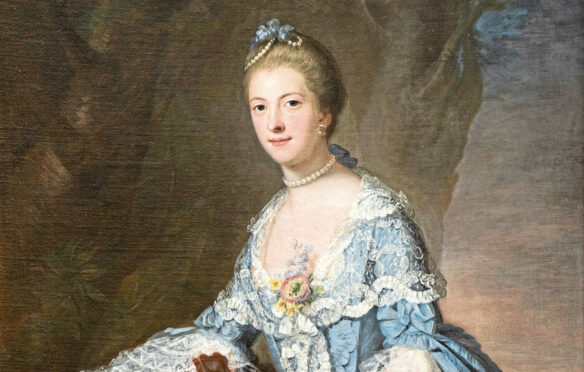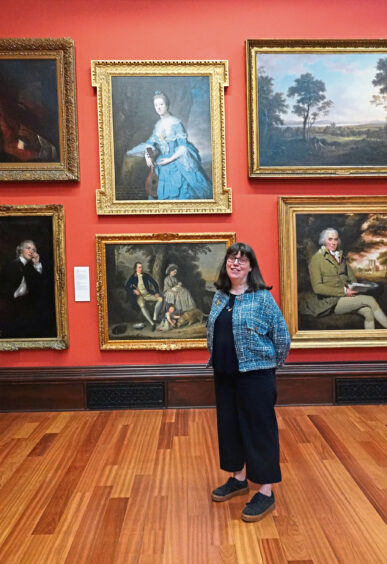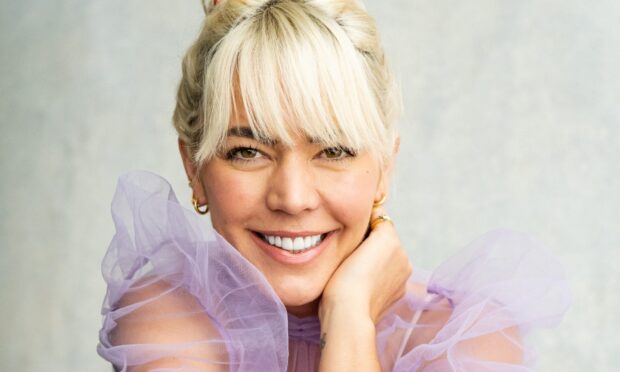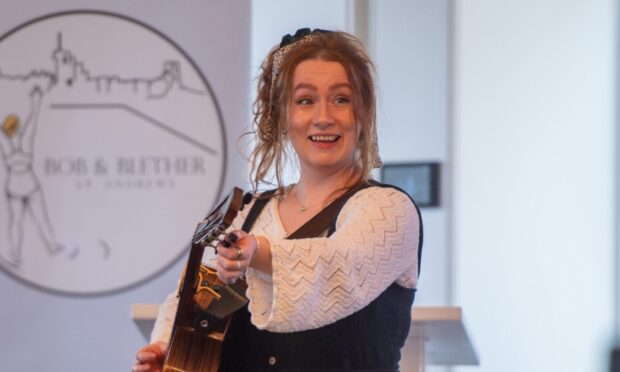She was the first Scottish woman to train as an artist and was one of the most fashionable portraitists of the 18th Century, painting royalty and gaining fame across Europe.
But how many people nowadays have heard of Dundee-born Katherine Read? Like many female artists of the past, the trailblazing Read faded into relative obscurity after her death, her name only known in small circles. Until now, that is.
Art lovers can now see one of her finest paintings, a portrait of Willielma, Lady Glenorchy, at the McManus Galleries after the museum recently acquired the work from a private collector.
It is rare for Reid’s paintings to become publicly available. She mainly produced portraits of women and children on commission, and the paintings have remained within the families for many generations.
A unique artist
“Professional women artists of this period are rare, the connection to Scotland rarer and for The McManus, Katherine Read’s connection with Dundee makes her unique,” said Anna Robertson, fine and applied art manager at The McManus.
“We are proud to add such a significant work to our permanent art collection. Katherine Read was very well known for her pastel drawings in the 1700s and she did work for some very high profile people, including for the Spencer family.
“She was really prolific, producing around 300 portraits. Going to have a portrait done by her was something that a lot of people wanted. But in the centuries that followed, she was rather forgotten and many of her paintings were attributed to male artists.”
Well-bred girls
Katherine Read was born in Logie, near Dundee, into a well-to-do family. Little is known of her early life, but it is assumed that she was schooled at home, as was the custom, before receiving some art training in Edinburgh.
Had she remained in Scotland, Read’s life may well have followed the restrictive trajectory available to women at the time, as outlined in the essay Well Bred Girls, by 18th-Century diarist Elizabeth Mure.
Describing the typical lifestyle of the Scottish middle classes, Mure wrote: “Musick, drawing or French were seldom taught the girls. They were generally sent to Edinr. for winter or two, to learn to dress themselves and to dance and to see a little of the world.
A restrictive world
“The world was only to be seen at Church, at marriages, Burials, and Baptisms. These were the only public places where the Ladys went in full dress.
When in the country their employment was in color’d work, beds, Tapestry, and other pieces of furniture; imitations of fruit and flowers, with very little taste.
“If they read it was either books of devotion or long Romances.” (Scotland Her Story: The Nation’s History By The Women Who Lived It, by Rosemary Goring).
Jacobites
Read’s destiny took a very different turn, however. Her uncle, Sir John Wedderburn, had been involved in the Jacobite cause and was executed by the Hanoverians.
After the battle of Culloden the Read family, whose name was tainted by association, fled to Paris to join the exiled Jacobite community there.
In the more permissive environment of Paris, 22-year-old Read was able to partake in activities not usually available to young ladies back home.
Exile in France
She became a pupil of French Rococo portraitist Maurice Quentin de La Tour whose work had influenced Allan Ramsay, and who was one of the first French artists to take on female students, writes Scottish artist, writer and broadcaster Lachlan Goudie in The Story of Scottish Art.
The Jacobite community provided unique opportunities – wealthy patrons purchased portraits of the exiled royal family and their supporters, hoping that they would help to legitimise their struggle.
“What mattered wasn’t the artist’s gender, but the ready availability of the painted propaganda they believed might further their cause,” explains Lachlan. “Katherine Read benefited considerably from this highly politicised art market.”
Distinguished clients
After Bonnie Prince Charlie was expelled from France in 1748, Read followed the other Scottish Jacobite refugees to Rome. Under the patronage of Roman Catholic priest Peter Grant, an agent in Rome to the Scottish Catholic Mission, Read was introduced to an elite network of deacons, cardinals, princes, princesses and imperial ambassadors.
These distinguished individuals were to become Read’s clients, purchasing her reproductions of religious paintings and her pastel portraits.
After another brief spell in Paris Read eventually returned to the UK, setting up a studio in London in 1753. By then, in the drive for national reconciliation, those who were exiled due to Jacobite association were allowed back into British society.
As in Paris and Rome, Read was able to establish an exclusive network of portrait clients, painting Queen Charlotte and her children in 1761, at the height of her artistic career.
Fashionable artist
A contemporary of Gainsborough, for a time, Read was perhaps the most fashionable portrait painter of her day with a contemporary commentator noting that “all the fine ladies have made it as much the fashion to sit to Miss Read, as to take air in the park”.
Read herself was confident of her talents, writing to her brother: “You’ll see I’ll top it with the best of them.”
Her success did not come easy, however. Even on the continent, women were subject to strict social conventions that limited the work they could do as artists. They were not allowed to undertake formal training alongside men, and it would have been scandalous for a woman to study anatomy or to attend life drawing classes with nude models.
Identical poses
Perhaps this could explain why many of Read’s subjects are posed similarly, with their heads tilted and turned slightly to the side, and a hand placed on their cheek or across their middle.
“We don’t really know exactly why this is, perhaps this was the fashion at the time, or maybe that’s the pose Katherine was comfortable with,” reflects Anna.
“Remember, she wasn’t able to study life drawing or anatomy. She would have had a lot of people coming through her studio, so she would have had to work rapidly. Perhaps she stuck to what she knew.”
Declining popularity
When Read reached her 50s, her popularity began to decline. She travelled to India with her niece, hoping to re-ignite her career in the lucrative markets of the East India Company.
Not much is known about her life there, but it is believed she did not take to the climate and her health deteriorated. Two months into a journey back to London in 1788, she died at sea.
Although her name was forgotten in the centuries that followed, Read and her other female contemporaries in London, such as Mary Moser and Angelica Kauffman, paved the way for future generations of female artists.
Scottish art tradition
“It’s very, very interesting to have someone like Katherine Read gain prominence when there really wasn’t a long-established Scottish fine art tradition at the time,” explains Murdo Macdonald, Emeritus Professor of History of Scottish Art at Dundee University.
“I think it’s worth remembering there were other female artists, such as Anne Forbes – although she was about 20 years younger than Katherine Read.
“Then there were the children of the famous portrait painter Alexander Nasmyth who painted Robert Burns. Nasmyth’s daughters, Jane, Barbara, Margaret, Anne and Charlotte, born around the end of the 18th Century, all became successful artists.
Female artists
“Later, in the 1820s, there was Amelia Hill, who had a major career in sculpture. So there is this hidden history of female artists. It isn’t so much that female artists have been completely neglected, but they have been lost in a sea of men for a long time.
“If you look back, you notice a thread – starting with Katherine Read being an absolute pioneer, through to the Nasmyths, and then Amelia Hill really putting Scottish female artists on the map.
“But it wasn’t until the late 19th Century that Scottish female artists really came into their own, one such was the very talented Nellie Baxter from Tayport, about whom we still know far too little.”
Dundee Women’s Trail
Dundee now has its very own map of important women who played a significant part in public life, in the form of a network of commemorative plaques – the Dundee Women’s Trail.
It was the Trail that brought Katherine Reid to the attention of the McManus management, who were able to secure a grant from the National Fund for Acquisitions and Art Fund to purchase the painting of Lady Glenorchy, painted in 1762. A plaque commemorating Katherine Reid has also been installed in front of the McManus.
Hazel Williamson, National Fund for Acquisitions manager, said: “We are really pleased to support the acquisition of this accomplished portrait, created by Katharine Read at the height of her career.
“It will enable the McManus to tell her story, as well as that of her sitter Lady Glenorchy, and we hope it will raise awareness of Read’s work as a pioneering female artist.”
Who was Lady Glenorchy?
Like Katherine Read, Willielma, Lady Glenorchy, was a highly unusual woman who was ahead of her time.
She was known for her beauty, her skills as a musician and enjoyed all of the pastimes available to a wealthy young woman – dancing, travel, theatre, cards – and was a popular and engaging hostess.
Willielma was painted in 1762, shortly after her marriage to John Campbell, Lord Glenorchy.
In 1771 she was widowed, when her husband’s health deteriorated and he died aged just 33. Willielma inherited his entire estate and was able to live as an independent woman with private means – highly unusual at the time.
However, she did not go on to live a lavish lifestyle. She had renounced her previous “life of thoughtless gaiety” and turned to God, spending the rest of her life – and considerable wealth – supporting Christian education and the establishment of chapels in Exmouth, Bristol, Carlisle and Workington.
The Lady Glenorchy Church at the top of Leith Walk in Edinburgh survives as a magnificent frontage to the Omni Centre.











